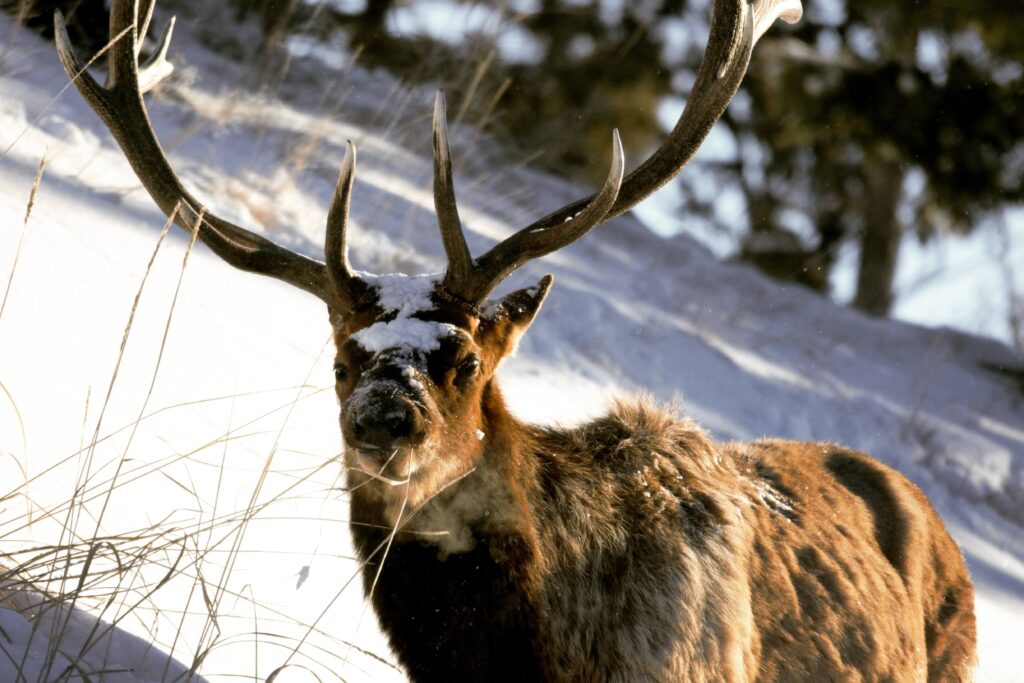If you live in Jackson Hole or an area with an elk population, you might have recently heard bull elk bugling during the fall rut, or breeding season. Bull elk can be easily identified by their impressive antlers during the summer and fall, some growing over 300″ of new bone over the course of just a few months. But after investing so much energy in growing antlers, why do bull elk shed them in the winter?
When you see a bull elk in the Greater Yellowstone System, take a careful look at his antlers. Are they perfectly matched, mostly matched, mismatched, or even broken off? Females prefer larger antlers because the bigger antlers you can grow, the healthier you are, i.e.. more successful at finding food in and adapting to the local ecosystem. Males that survive despite the burden of their massive antlers – some growing over 300” over the course of just a few months – are chosen by the females to breed and get a chance to pass on their genes.

Growing big antlers, however, isn’t enough. Bull elk need to grow symmetrical antlers to really impress the ladies. Asymmetrical antlers are not attractive, even if they’re large in size, because they’re an indication of a malfunction. Some asymmetrical antlers are actually genetic, but most are likely from an injury. Even a back injury can result in asymmetrical antlers. Antlers can be damaged or break off while they are growing, or later on after the velvet is sloughed off. A bull elk prone to such injuries might not be the agile, athletic male that a female wishes to sire her young.
But what if the injury happened when the elk was young? It would be a shame for an elk’s injury as a yearling to affect his chance to breed as a prime 9-year-old, right?
For a human analogy, imagine a guy has bought a Hummer to impress the ladies. It’s visually impressive – an indication of fiscal success. But if there is a giant dent in the side and he’s still driving it around, that’s an instant red flag there’s something wrong with him. Either he’s too cheap to get it fixed or he’s a really bad driver (or both). Either way, it’s no longer quite so impressive to the ladies. But if he were to lease a new Hummer each year, it would let him trade in the bashed-up Hummer of his youth for a new one – albeit at a higher expense than just maintaining one vehicle from year to year.
Shedding antlers annually is a seriously high price for a bull to pay as it taxes their energy and calcium reserves. The life expectancy of a bull elk is only half that of a cow elk, and the annual regrowth of antlers is a contributing factor. But regrowing antlers does give bull elk another chance at impressing the females each year. If the pedicle – the base of growth for the antlers, where they attach to the skull – is damaged, the antlers will probably return lopsided every year and the bull elk may never have much of a chance to breed. In many cases though, if an antler breaks or is damaged while growing, a bull will shed those damaged antlers and grow back a perfect set of symmetrical antlers the following summer that will help him attract cow elk in the fall.
So, here’s to all the bull elk who weren’t successful this mating season due to lopsided antlers. May you have better luck next year.


